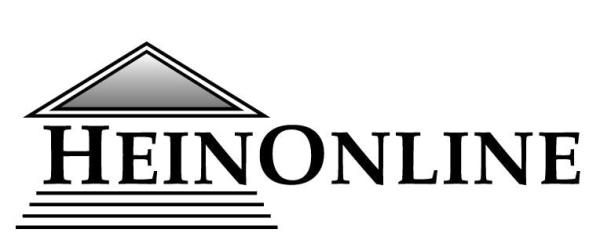THE SUBCULTURE OF CLOTHING BETWEEN HUMAN RIGHTS AND THE THREAT OF TERRORISM
DOI:
https://doi.org/10.5937/ptp2502113SKeywords:
human rights, terrorism, female terrorists, security, European Court of Human RightsAbstract
Although at first glance clothing choices appear to be a matter of individual freedom—subject only to certain exceptions involving unwritten, or more rarely written, norms that typically carry no serious sanctions—there are situations in which this issue is raised to a much higher level. It is often linked to specific garments associated with Muslim women, such as the hijab, niqab, burqa, and others. In line with this, the paper highlights certain challenges related to human rights issues, but also to security concerns, which require a more in-depth and nuanced approach, especially considering numerous instances in which men dressed as women have carried out terrorist attacks or evaded law enforcement. In order to propose a suitable legal solution—a compromise that would respect individual rights while also addressing potential security risks—the paper employs several methodological approaches. A comparative method is used to examine the legal frameworks of different countries. Documentary analysis is applied to judgments of the European Court of Human Rights. Additionally, an analytical approach is used to examine relevant passages from the Qur’an that pertain to clothing and the obligation to cover certain parts of the body.
References
Ashni, F. Z., & Gerber, P. (2014). Burqa: Human right or human wrong? Alternative Law Journal, 39(4), pp. 231–234. DOI: 10.1177/1037969X1403900406
Avolio, B., & del Carpio, L. (2020). Gender equality index for country regions. International Review, 9(1-2), pp. 57–74. DOI: https://doi.org/10.5937/intrev2001057A
Alempijević, Đ., et al. (2010). Suzbijanje trgovine ljudima – dobre prakse, priručnik za institucije [Combating Human Trafficking: Good Practices – A Handbook for Institutions]. Beograd: ASTRA-Akcija protiv trgovine ljudima. Downloaded 2025, March 27 from http://repozitorijum. pravnifakultet.edu.rs/160/1/Prirucnik-za-institucije.pdf
Aljazeera. (2022). Francuski senat izglasao zabranu hidžaba na sportskim takmičenjima [French senators vote to ban hijab in sports competitions]. Downloaded 2025, January 10 from https://balkans.aljazeera.net/news/world/2022/1/19/francuski-senat-izglasao-zabranu-hidzaba-nasportskim-takmicenjima
Bjelajac, Ž., Matijašević, J., & Dimitrijević, D. (2012). Finansiranje međunarodnog terorizma kao globalnog fenomena. Evropsko zakonodavstvo, 11(39-40), pp. 384–407. Downloaded 2025, January 10 from http://repozitorijum.diplomacy.bg.ac.rs/510/1/Evropsko%20zakonodavstvo%20br.%2039-40-2012-386-409.pdf
Bjelajac, Ž., Tepavac, R., & Dašić D. (2012). Izvori i načini finansiranja međunarodnog terorizma [Sources and methods of international terrorism financing]. In: Bjelajac, Ž., & Zirojević Fatić, M. (ured.), Terorizam kao globalna pretnja [Terrorism as a global threat] (pp. 233–253). Novi Sad: Pravni fakultet za privredu i pravosuđe Novi Sad i Centar za bezbednosne studije Beograd. Downloaded 2025, March 25 from https://kpolisa.com/books/Terorizam_kao_globalna_pretnja.pdf
Chesler, P. (2010). Ban the burqa?: The argument in favor. Middle East Quarterly, 17(4), pp. 33–45. Downloaded 2025, March 25 from https://www.meforum.org/middle-east-quarterly/ban-the-burqa-2777
Dabić, S., Spasojević, Đ., & Radulović, Z. (2023). The role of social institutions in protection of children from abuse and neglect. Kultura polisa, 20(1), pp. 110–125. DOI: https://doi.org/10.51738/Kpolisa2023.20.1r.110dsr
Domazet, S., Marković, D., & Skakavac, T. (2024). Privacy under threat – The intersection of IoT and mass surveillance. Pravo – teorija i praksa, 41(3), pp.109–124. DOI: 10.5937/ptp2403109D
Družetić, I. (2013). Francuska zabrana muslimanske burke i njezini odjeci u hrvatskim medijima [France’s muslim burqua ban and its reflections in the croatian media]. Studia ethnologica Croatica, 25(1), pp. 207–230. Downloaded 2025, January 12 from https://hrcak.srce.hr/ojs/index.php/sec/article/view/2372
Euronews Srbija. (2023). Skidanje hidžaba na aerodromima u Nišu i Kraljevu: Mešihat IZ u Srbiji o diskriminaciji, Aerodromi: Pravila ista za sve [Removing the hijab at the airports in Niš and Kraljevo: Mešihat IZ in Serbia on discrimination, Airports: The rules are the same for everyone]. February 21. Downloaded 2025, March 26 from https://www.euronews.rs/srbija/drustvo/78713/skidanje-hidzaba-na-aerodromimau-nisu-i-kraljevu-mesihat-iz-u-srbiji-o-diskriminaciji-aerodromi-pravilaista-za-sve/vest
Howard, E. (2012). Banning Islamic Veils – Is Gender Equality a Valid Argument?. International Journal of iscrimination and the Law, 12(3), pp. 147–165. DOI: https://doi.org/10.1177/1358229112464450
Human Rights Watch. (2009). Beyond the burqa. Human Rights Watch. July 2. Downloaded 2025, March 25 from https://www.hrw.org/news/2009/07/02/beyond-burqa
Hrupić, M. (2017). IS prvi put napao Iran: Teroristi prerušeni u žene lako su prošli sigurnosne mjere i pobili nevine [ISIS attacked Iran for the first time: Terrorists disguised as women easily passed security measures and killed innocents]. Jutarnji list, June 8. Downloaded 2025, January 10 from https://www.jutarnji.hr/vijesti/svijet/is-prvi-put-napaoiran-teroristi-preruseni-u-zene-lako-su-prosli-sigurnosne-mjere-i-pobilinevine-6203441
Jovanović, N. (2014). Islam i savremeni svet – religijske zabrane: primeri i prakse u svakodnevnom životu [Islam and the modern world – religious prohibitions: examples and practice in everyday life]. Religija i tolerancija, 12(21), pp. 161–180. Downloaded 2025, January 13 from https://ceir.co.rs/images/stories/broj_21_formular/RIT21.pdf#page=163
Jovanović, S. (2015). Možda je rođena s tim, a možda je terorista: Iračani uhapsili 17 isilovaca prerušenih u žene [Maybe she was born with it, or maybe she’s a terrorist: Iraqis arrested 17 ISIS members disguised as women]. Srbija danas, March 15. Downloaded 2025, January 10 from https://www.sd.rs/clanak/mozda-je-rodena-s-tim-mozda-je-teroristairacani-uhapsili-17-isilovaca-prerusenih-u-zene-foto
Korkut, B. (n.d). Prijevod Kur’ana [Translation of the Qur’an]. Downloaded 2025, January 9 from https://mizbdubica.com/wp-content/uploads/2020/06/Prijevod-Kurana.pdf
Kuduzović, A. (n.d.). Kad je vrijeme za hidžab [When is it time for hijab]. N-UM.COM. Downloaded 2025, May 24 from https://www.n-um.com/kad-je-vrijeme-za-hidzab-a/
Kurtović, A. (2018). Zabrana nošenja vjerskih obilježja na random mjestu: perspektiva Suda pravde Evropske unije [Prohibition of wearing religious symbols in the workplace: the perspective of the Court of Justice of the European Union]. Sarajevo: Analitika – Centar za društvena istraživanja. Downloaded 2025, January 13 from https://www.analitika. ba/bs/publikacije/zabrane-nosenja-vjerskih-obiljezja-na-radnom-mjestuperspektiva-suda-pravde-evropske
deLeede, S. (2018). Women in Jihad: A Historical Perspective. The Hague: The International Centre for Counter-Terrorism. DOI: 10.19165/2018.2.06
Malešević, M. (2007). Hrišćanski identitet sekularne Evrope [Christian Identity of Secular Europe]. Glasnik Etnografskog instituta SANU, 55(1), pp. 9–28. Downloaded 2025, March 24 from https://dais.sanu.ac.rs/handle/123456789/8811
Milošević, Z. (2012). Evropska unija i islam [The European Union and Islam]. Srpska politička misao, 36(2), pp. 257–274. Downloaded 2025, January 12 from https://www.ceeol.com/search/article-detail?id=546337
Nezavisne novine. (2011). Uhapšen terorista prerušen u ženu [Arrested terrorist disguised as a woman]. June 28. Downloaded 2025, January 10 from https://www.nezavisne.com/novosti/svijet/ Uhapsen-terorista-prerusen-u-zenu/95347
Okin, S. M. (1997). Is multiculturalism bad for women?. Boston Review, 22(5), pp. 25–28. Dowloaded 2025, March 26 from https://www.bostonreview.net/forum/susan-moller-okin-multiculuralism-bad-women/
Petrović, D. (2018). O uzrocima bombaškog terorizma – ekstremna gledišta [Causes of Terrorist Bomb Attacks – an Extreme Point of View]. Bezbednost, 60(2), pp. 67–85. DOI: 10.5937/bezbednost1802067P
Prelević Plavšić, S., Spasojević, Đ., & Dragojlović, J. (2023). Inadequacy of Application of Sentencing Policy for Perpetrators of Domestic Violence. Kultura polisa, 20(3), pp. 107–127. DOI: https://doi.org/10.51738/Kpolisa2023.20.3r.107ppsd
Rašević, Ž., & Vlajnić, J. (2022). Novela Zakona o zabrani diskriminacije – korak napred? [Amendments to the Serbian Law on Prohibition of Discrimination: A step forward?]. Trendovi u poslovanju, 10(19), pp. 109–117. DOI: 10.5937/trendpos2201101D
Simić, J. (2019). Burka, hidžab i nikab – gde muslimanke ne smeju da ih nose [Burqa, hijab, and niqab – where Muslim women are not allowed to wear them]. RTS, May 4. Downloaded 2025, January 10 from https://www.rts.rs/lat/vesti/svet/3509835/burka-hidzab-i-nikab--gde-muslimanke-nesmeju-da-ih-nose.html
Spasić, D., & Vučković, G. (2011). Žene kao teroristi – Novi rodni identitet terorizma [Women as terrorists – New gender identity of terrorism]. In: Mijalković, S. (ured.), Suprotstavljanje savremenom organizovanom kriminalu i terorizmu [Opposing modern organized crime and terrorism] (pp. 259–273). Beograd: Kriminalističko-policijska akademija. Downloaded 2025, January 11 from https://jakov.kpu.edu.rs/bitstream/id/6539/1.pdf
Štajnver, U. (2016). Burka, čador, feredža…[Burka, chador, ferajah...]. DW, August 8. Downloaded 2025, January 10 from https://www.dw.com/sr/burka-%C4%8Dador-fered%C5%BEa/a-19512432
Vuković, I. (2018). Blasfemija i krivično pravo – uporedno zakonodavstvo i judikatura [Blasphemy and criminal law – comparative legislation and judiciary]. Crimen, 9(2), pp. 133–154. Downloaded 2025, January 13 from https://epub.ius.bg.ac.rs/index.php/crimenjournal/issue/view/41/38
Zedalis, D. D. (2005). Žene bombaši samoubice [Female suicide bombers]. Bezbednost, 47(6), pp. 1060–1076. Downloaded 2025, January 11 from http://www.mup.gov.rs/wps/wcm/connect/d68cb4ae-3969-41b4-930f
Downloads
Published
How to Cite
Issue
Section
License
Copyright (c) 2025 Đorđe Spasojević, Jelena Vlajnić, Snežana Prelević Plavšić

This work is licensed under a Creative Commons Attribution 4.0 International License.















